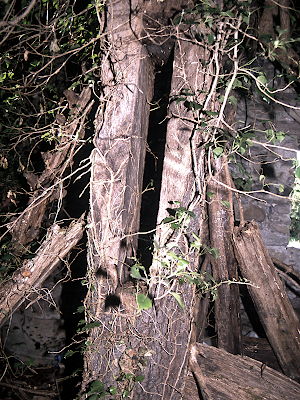Mills in Alto Aragón - aceitero, harinero
Perrarúa
Perrarúa is a village in the
Ribagorza county. You will find it along the main road between Graus and Campo only a few km North
of the former. Find your way to the main square and walk then the
Calle Mayor to the North.
After only a few steps you will find the
Calle Molino at your right. The mill is at the end of this street
(1) just opposite the washing basins.
Pictures: 22.VIII.2013

(1) The mills at the East end of the village — 18.IV.2014
The construction is almost entirely hidden under a
thick blanket of Ivy and is used as a garbage dump for the neighbourhood. This makes a visit, and certainly navigating inside, a rather unpleasant and trying experience.
The space inside is divided in two separate places. The larger
room occupies about two thirds and houses the oil mill (2). The other room was used for the grain mill (3).
This layout is also visible at the outside in the size and the colour of the stones that where used (2).
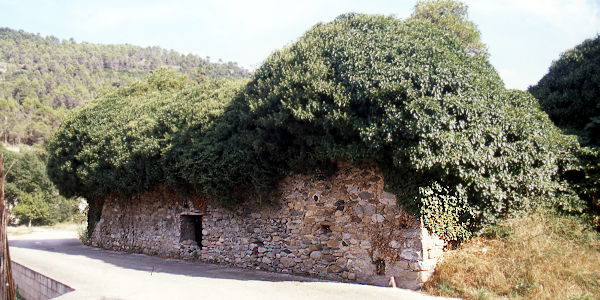
(2) Molino aceitero
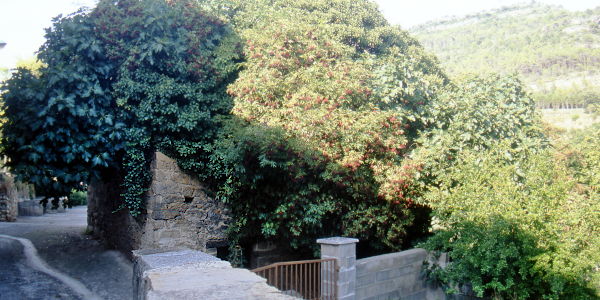
(3) Molino harinero
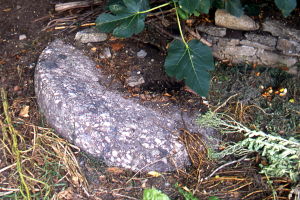
(4) Stone at the entrance of the mill.
Molino harinero
I couldn't find a way to enter the grain mill.
There was a small space which may have been the entrance or a reception room in former times, but
it was full of neglected stuff and the only thing reminiscent of the milling business
was a decommissioned stone on the ground just outside (4).
The only way to enter the oil mill is through
the opening visible in (2). It is not clear if this was originally a door or a window.
If we consider the layout of the work place, probably the latter.
An entrance at this place would have been far too close to the press. The
entrance and more windows were most likely at the other, the South facing, side, but because of the vegetation
it is impossible to know for sure.
It is dark inside and it is difficult to find a way
between the dense vegetation and over a thick layer of garbage (with glass shards).
The oil mill (almazara) was equipped with a huge prensa de viga y quintal.
This is the oldest type of press: a wooden cantilever. This type was gradually replaced by the more efficient vertical, hydraulic presses.
(5-6) Vírgenes: upright beams at the fixed end of the cantilever press.
Only a few of this impressive cantilever presses did survive until today
and it is a real shame that nothing was done to save this specimen which is so close to a village center.
A display of this type of press can be seen in
Graus,
Panillo, and
Barbastro.
Only two beams of the press are still upright: the vírgenes
(5, 6) near the end that is fixed during the extraction process. The other parts of the press can still be found, but they are dispersed and rotting away on the ground.
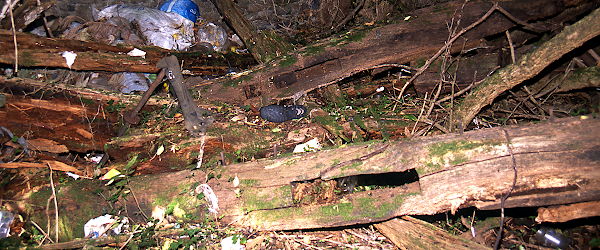
(7) Guiaderas: upright beams placed midway of the cantilever.
We recognize the guiaderas (7), the vertical beams placed about midway of the press in order to keep the viga (the cantilever) from
sliding aside.
Also the long wooden screw, husillo or caracol (8), which serves to turn the press up and down.
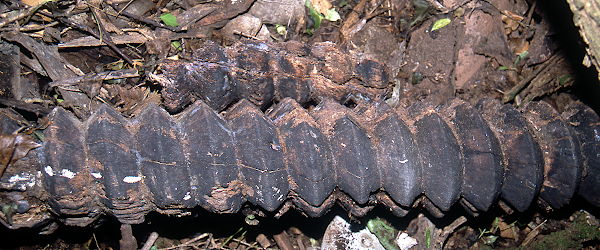
(8) The endless screw (caracol, husillo) which serves to turn the press up and down.
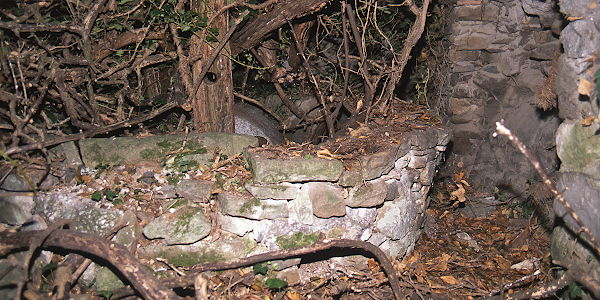
(9) The torno, the roller crusher where the olives were broken.
The balsa, the flat circular surface inside the roller crusher where the olives were crushed (9), is bordered with a relatively high and thick wall built with irregular stones. In other places with a similar crusher, concrete was used to build the walls (e.g.
Aler,
Palo).
The wooden beam on which the roller stone is mounted, is still
upright. Notice the opening (9) through which poles were inserted to turn the beam and with it the stone.
There is only a narrow space to make rounds, however, and in one way or another water may have been the
main driving force.
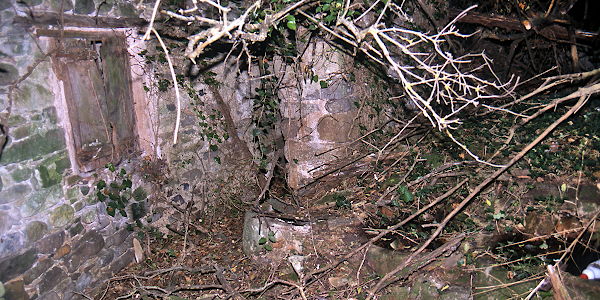
(10) Decanter vessels.
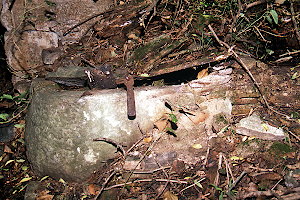
(11) The leftmost vessel of (10).
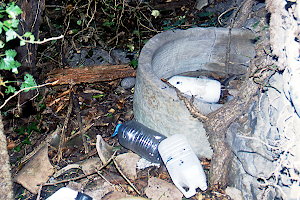
(12) Vessel situated near the virgenes.







